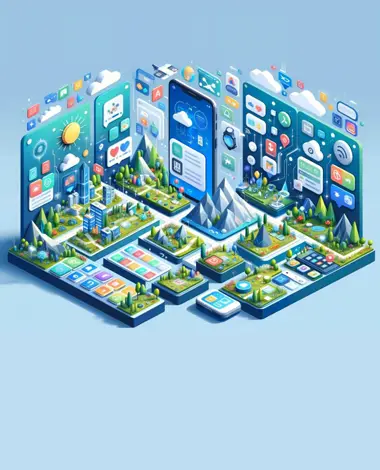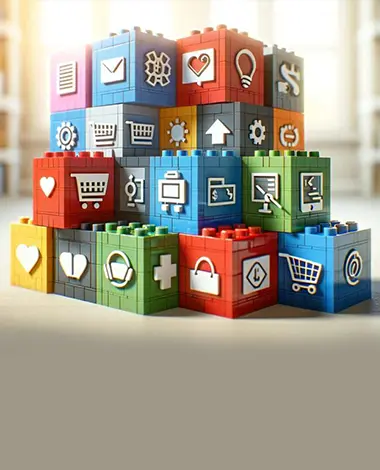Unleashing the Kraken of Online Shopping Experiences!
76% of respondents agreed that headless commerce allows for more flexibility, and the ability to customise digital experiences
The Annuitas Group
Imagine a world where your online shopping experience, whether it’s scooping up industrial machinery or snagging the latest trainers, is smoother than a freshly Zamboni ice rink. This isn’t a pipedream for Silicon Valley execs – it’s the reality promised by headless commerce, the revolutionary approach reshaping the online shopping landscape for both B2B and B2C brands.
So what exactly is this headless commerce business?
Unlike traditional e-commerce platforms, where the front-end (what you see) and back-end (the engine powering it) are tightly coupled, headless commerce decouples them. Imagine a car with a powerful engine purring under the bonnet but with a customisable dashboard and steering wheel tailored to your preferences. You choose how you drive, while the engine hums efficiently in the background.
Or, think of it like this: Traditional e-commerce platforms are like those clunky all-in-one stereo systems of yore. Everything’s bundled together, from the cassette deck to the eight-track player (remember those?). Headless commerce, on the other hand, is like a hi-fi component setup. The powerful engine – your back-end systems – hums quietly in the background, while you mix and match your front-end interfaces to create bespoke experiences for every customer.
This decoupling unlocks a treasure trove of benefits for both B2B and B2C businesses:
- Agility and Personalisation: Headless platforms cater to the complex needs of B2B buyers. Imagine creating bespoke storefronts for different customer segments, each with tailored product catalogues and pricing. You can even integrate with existing CRM and ERP systems to streamline the ordering process, making life easier for your busy clients.
- Frictionless Buying Journeys: Gone are the days of clunky B2B interfaces. Headless commerce lets you build intuitive buying journeys, from quote requests to order approvals, all within a branded experience. This translates to happier customers and increased conversions, a win-win situation.
- Integration Powerhouse: Headless platforms excel at API integrations. Whether it’s connecting to your inventory management system or a customer loyalty programme, headless commerce seamlessly blends your existing technology stack, creating a unified ecosystem for a smoother B2B experience.
- Omnichannel Mastery: Headless commerce frees you from the limitations of a single platform. Create engaging shopping experiences across all touchpoints, all powered by the same central engine, while ensuring a consistent brand experience no matter where your customers shop, whether they’re browsing on the train or popping into your flagship store.
- Speed and Performance: Headless platforms are built for speed. With decoupled front-ends, you can optimise your storefront for lightning-fast page load times, crucial for today’s impatient online shoppers. This translates to higher engagement and conversions, making your website a joy to use and boosting your bottom line.
- Powerful Content Creation: Headless commerce empowers you to be a content creator extraordinaire. Inject rich product descriptions, engaging videos, and interactive elements into your storefront, making the shopping experience more than just a transaction, but a journey of discovery. Keep your customers informed and entertained, and they’ll keep coming back for more.
For marketing folks, here’s the magic:
- Picture bespoke storefronts for different customer segments, with targeted product recommendations and pricing that make Scrooge McDuck blush. Headless makes it a reality, boosting engagement and conversions like well-placed product placement in a rom-com.
- Content is king, queen, and non-binary ruler: Ditch the boring product descriptions and static images. Headless lets you inject rich video, interactive elements, and captivating stories into your storefront, transforming the shopping experience into an interactive Netflix docuseries (minus the questionable life choices, hopefully).
- Break free from the tyranny of a single platform. Headless lets you craft immersive shopping experiences across any touchpoint, from mobile apps and wearables to in-store kiosks, all singing from the same seamless hymn sheet. Your brand becomes a digital chameleon, blending seamlessly into any environment.
For the technically motivated, here’s the techie whisperer:
A 5% increase in customer retention can increase profits by up to 95%.
Bain & Company
- API Integrations Galore: Headless platforms are API whisperers, seamlessly connecting with your existing CMS, CRM, ERP, inventory management systems, and other SaaS platforms. It’s like building a digital Voltron, where each platform becomes a powerful limb in your e-commerce arsenal.
- Speed Demon: Forget dial-up days – headless platforms are built for the age of instant gratification. With decoupled front-ends, you can optimise for lightning-fast loading times, so your customers can snag that limited-edition sweater before it disappears faster than a free doughnut at a police station.
- Composable Commerce: The future is modular, and headless embraces it. Mix and match best-of-breed technologies and the latest and greatest SaaS offerings for loyalty, reviews, search and personalisation et al, to create and compose your ideal e-commerce solution, a digital Frankenstein’s monster of awesomeness, stitched together with APIs of pure genius.
- Modern Tooling: Headless commerce is an API playground paradise. The decoupled front end allows you to leverage the latest JavaScript frameworks for blazing-fast performance and seamless integration using GraphQL with modern CMS options like Contentful or Prismic. You pick and choose the best-in-breed tools for each layer – its developer freedom is unbound, letting you craft bespoke experiences with ultimate flexibility and future-proof your tech stack for seamless evolution as new tools emerge.
- Technical Debt: Headless commerce can be a double-edged sword for technical debt. On the one hand, it tackles existing debt by dismantling monolithic platforms. You replace it with modular components, APIs, and microservices, making codebases easier to maintain and update. Think of it as demolishing a tangled brick maze and rebuilding it with clean, interconnected Lego blocks. However, headless may introduce its own complexities, so the initial planning and engineering costs can be sizable. Ultimately, the impact on technical debt depends on your team’s skills, tooling choices, and approach to API integration and security. Done right, headless can significantly reduce future debt.
Of course, no revolution is without its challenges. Headless requires some technical know-how, and integration complexity can be a beast to tame. But for those who embrace the dance, the rewards are undeniable. Brands like Nike and Unilever have seen sales soar, customer satisfaction skyrocket, and their tech teams do celebratory cartwheels thanks to headless commerce.
Personalised, omnichannel shopping is becoming the norm. Headless commerce (as a move towards composable commerce) isn’t just a technological fad; it’s a fundamental shift, a digital handshake between marketing finesse and technical prowess. Headless commerce gives you the tools to make those experiences memorable, personalised, and faster than a cheetah on a sugar rush. Go forth and conquer the online shopping universe, one API integration at a time!
Remember, you’re not just selling products, you’re crafting the next-generation customer experiences.
Table of Contents












